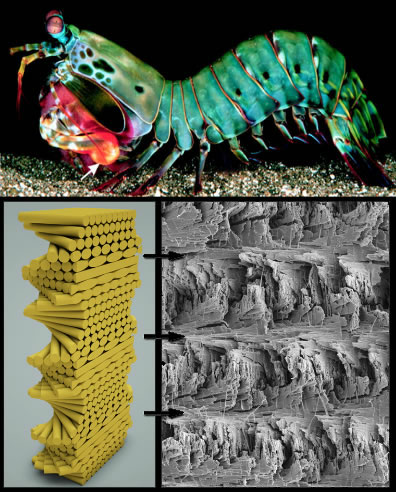Mantis shrimp, which ironically is neither mantis nor shrimp, sure knows
how to pack a punch. The bright orange fist-like club of the mantis-shrimp,
which it uses to
crack open clam
shells, accelerates faster than a 22-caliber bullet underwater. But
how does the Mantis shrimp club survive repeated high-velocity strikes
without cracking?
[University of California, Riverside professor David
Kisailus] found that the club is a highly complex structure, comprised
of three specialized regions that work together to create a structure
tougher than many engineered ceramics.
The first region, located at the impacting surface of the club,
contains a high concentration of mineral, similar to that found in human
bone, which supports the impact when the mantis shrimp strikes prey.
Further inside, highly organized and rotated layers of chitin (a complex
sugar) fibers dispersed in mineral act as a shock absorber, absorbing
energy as stress waves pass through the club. Finally, the club is encapsulated
on its sides by oriented chitin fibers, which wrap around the club,
keeping it intact during these high velocity impacts.
“This club is stiff, yet it’s light-weight and tough,
making it incredibly impact tolerant and interestingly, shock resistant,”
Kisailus said. “That’s the holy grail for materials engineers.”


No comments:
Post a Comment